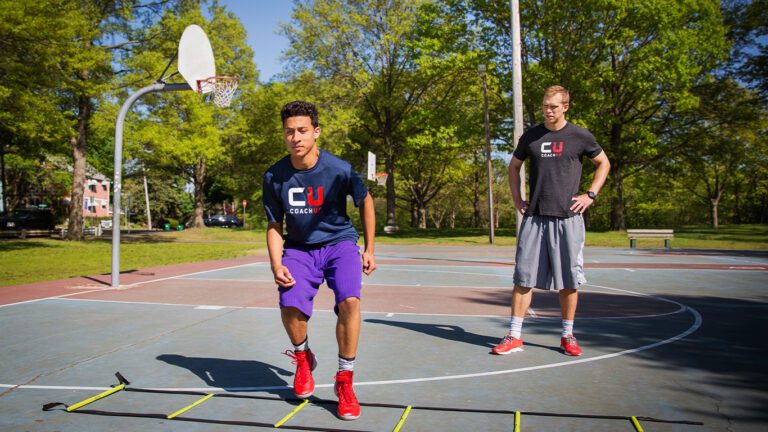With such an abundance of gyms, rec centers, and fitness clubs, finding a place for personal training is easier than ever before. Choose an activity and go—you can be out the door improving your well-being with the flip of switch.
But what if your motivation is lacking? How can you get your motivation back? And how can you stay motivated? We all face these questions at some point in our health and fitness journey. Here are four excellent tips to motivate you as you start or seek to get back to training.
“Ability is what you are capable of doing. Motivation determines what you do. Attitude determines how well you do it.” – Lou Holtz
Know your objective and share it!
If you don’t understand why you are trying to exercise, then you are less likely to stay with the routine for very long. Whether it’s to lose weight, spend more time outdoors, run a 5K, fight depression, or lower your cholesterol, you must establish the reason for exercising.
Once you know your objective, share it with family and friends! We make promises and mental to-do lists for ourselves every day. How often are you able to fulfill all your obligations and daily tasks? Do you find it easier to stay focused when you share those responsibilities and promises with others? If so, try doing the same with your exercise routine!
When family and friends know your commitment to training, they can encourage you to reach your goals. Make sure you highlight the most important workouts each week to reduce the chance of scheduling conflicts and related stress. As the next tip explains further, remember to be flexible and realistic with your training. Your training must compliment your other responsibilities in life to find success.
Be realistic and give It time
Understand the real demands of training. Going from the couch to 5K, training for your first marathon, or completing your first triathlon. Each of these goals place a physical demand on our bodies that it may not be ready to handle. Ask yourself if your goal is practical and safe given your current state of health and overall ability of your body.
Being physically and mentally ready to exercise or work toward a goal is step one. The next step is to make sure your training is relevant to your goals. In training for your first marathon, the primary emphasis is adjusting to the increased time on your feet. A realistic training plan for a first-time marathoner is going to sacrifice intensity for improving endurance and gaining experience. As opposed to the seasoned marathoner looking for a personal record that will incorporate higher intensity workouts more frequently.
Lastly, always make sure your training is outcome oriented and review your progress regularly. If you find yourself repeatedly not meeting your expectations, then your goal might not be realistic. Rather than running yourself into the ground and risking injury, adjust your goals and admit that it is going to take more time than originally imagined.
Follow a training plan or hire a coach
A personalized training program will provide you with a framework for listing goals and building a strategy to reach them.
Following a plan not only gives you the layout for the day, but it also sets up the big picture for the coming weeks and months. Without a plan in place, progression with nutrition or fitness goals can be tough.
Keeping to a training plan allows you to track variations in exercises, weights, sets, reps, intensities, and more. This record keeping will give you confidence that progressive overload is taking place. As you start to see improvements, you will gain confidence in following a training plan. Likewise, if you start to struggle with progression, you will have a record of workouts to review for a solution to your issues.
Taking a training plan one step further by hiring a coach or trainer can elevate your motivation and progress to another level. Besides motivation and a training program, a coach provides you with education and proper instruction on how to perform or adjust exercises to your unique requirements. Also, a coach gives you a training plan with less wasted time – maximizing results within your busy life schedule.
Give yourself a reward
After defining and sharing your objective, setting realistic goals, designing a training plan and/or hiring a coach, all that is left to do is the physical work. You are now armed with accountability, motivation, and the knowledge to reach your health and fitness goals.
Once you have done the work, why not reward yourself for it? Studies show that giving yourself good extrinsic rewards for exercising can improve the likelihood of you completing the workout. Also, rewarding yourself can provide mental strength and motivation to keep coming back to the exercise room for more!
Some example of extrinsic rewards for exercising:
- Give yourself the gift of rest and choose a day to move your pre-dawn workout to the evening.
- Set a route for your next run that ends at your favorite park, beach, coffee shop, or store. When you reach the end-point reward yourself for a job well done.
- Try scheduling a workout around time with friends or your favorite TV show. Commit to getting your exercise in before you spend time socializing or vegging out on the couch.
- Plan a day for a massage or some extra pampering. When you reach a significant milestone in your training, reward yourself by taking care of yourself that much more!
- If you’ve been working hard and achieving your goals, you may notice that your clothes are fitting differently. Save up and plan to spend a little more on yourself to refresh your wardrobe.

With our 100% money-back guarantee and vetted coaches, anyone can achieve their full athletic potential. CoachUp is the safest and easiest way to find a coach for personalized training. Find your perfect coach today and become the athlete you want to be!
How useful was this post?
Click on a star to rate it!
Average rating 4.8 / 5. Vote count: 4
No votes so far! Be the first to rate this post.



